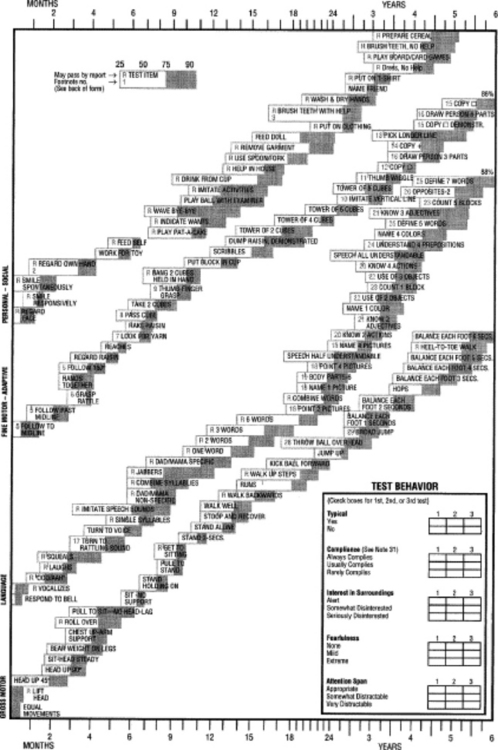Chapter 9 Developmental Assessment
What Are the Major Areas of Development?
Development is usually divided into broad categories: motor, language, cognition, problem solving, and psychosocial. These categories facilitate ongoing surveillance. Each links to the others and is influenced by progress in the others. An individual’s overall development represents the totality of the interaction. A practical approach to categorizing development can be found in the Denver II, which provides population-based norms for development in four “streams”: gross motor, fine motor/adaptive, language, and personal/social (Figure 9-1). A separate stream devoted to cognition does not appear in the Denver II, but the fine motor/adaptive, language, and personal/social streams all reflect cognitive development. Other, more formal developmental assessment tools use more complex categorization schemes, but for your purposes during the clerkship, simple schemes suffice. The Bright Futures Pocket Guide provides useful lists of age-related developmental skills for day-to-day clinical evaluations.
< div class='tao-gold-member'>
Stay updated, free articles. Join our Telegram channel

Full access? Get Clinical Tree




